What is a Photogravure?
Paul Unks, of Denver, nicknamed Mountain Hawk, explains the craft of printing photogravures: “Developed in the 1850’s, an intaglio photogravure is produced through a complex painstaking hand-made process whereby the original photographic image is etched into a metal plate allowing the plate to hold ink. Then, oil based ink is carefully applied by hand onto the etched plate so that the ink is pushed down into the etched grooves of the plate that range in depth from deep (dark) to shallow (light). Once the printing plate is properly inked, high quality moistened paper is placed on the inked plate and then hand cranked in a press at 10,000 lbs of pressure causing the paper to squeeze down into the grooves of the plate. After the paper fibers have absorbed the ink, the paper is carefully peeled off the plate leaving the image deeply embossed into the paper fibers creating a fine art print that has the subtle detail of a photograph, the velvety texture of an etching and richness of an oil painting.”
The technical difficulties of the photogravure process can seem infinite and insurmountable at times. Ansel Adams remarked, “Photogravure is a most beautiful technique, but I would not recommend anyone do it”.
NOTE: There are only a handful of master printers in the world today who make hand-made photogravure plates and prints. And Mountain Hawk is the only one producing Curtis’ original photographs as he did, as intaglio photogravures, each archival print individually hand-made, one at a time, restoring Curtis’ original fine photographic detail that had previously been lost, to new plates. Using this traditional classic method, Mountain Hawk is faithfully and authentically completing the edition Curtis started, but wasn’t able to finish in his life time.
While in recent decades printers have produced re-strikes from the original plates, many of those plates have been lost, destroyed or damaged, and the ones that are intact are worn from repeated printing.
Paul Unks, nicknamed Mountain Hawk, has gone a step further in craftsmanship and quality to produce his photogravures working from an early set of images and using high-resolution photography he has created new copper plates; then, in collaboration with a master print maker, and refining his ink and sourcing a very fine paper—a tissue that is translucent, imparting a wonderful dimensionality to the print—he has produced new photogravures of incomparable quality. Many people have remarked that the sharpness and detail are every bit as good as the best originals. As Curtis himself was able to produce less than half of his intended edition of 500, Paul’s great purpose is to complete the edition with the original artistic standards intended by Curtis—and so in a real sense to fulfill Curtis’s mission. A passionate historian and speaker on Curtis as well as craftsman, Paul is thoroughly devoted to honoring Curtis’s legacy with this truly extraordinary collection.
THE WORK OF EDWARD SHERIFF CURTIS (1868-1952)
Edward Sheriff Curtis (1868-1952) is the most famous photographer of the American Indian. In 1906, JP Morgan contracted with Curtis to photograph and document native American life throughout the west. The following year the artist began publishing his twenty volume The North American Indian.
The project was driven by passion and urgency; in the introduction to the first volume, Curtis wrote, “The information that is to be gathered … respecting the mode of life of one of the great races of mankind, must be collected at once or the opportunity will be lost.”
The work included folios of photogravures that have become highly treasured and sought after. When Curtis originally sold his images they cost the subscriber $3000 per 20 volume set. Now Curtis’s pictures of the poorest of Americans are sold to the richest of Americans, often bringing $30,000 to $75,000 per image.
A SHORT HISTORY OF EDWARD CURTIS’ LIFE
In 1906, J. P. Morgan provided Curtis with $75,000 to produce a series on Native Americans. This work was to be in 20 text volumes with 1,500 small photogravure illustrations, accompanied by twenty folios with 720 large photogravures. Morgan’s funds were to be disbursed over five years and were earmarked to support only fieldwork for the books not for writing, editing, or production of the volumes. Curtis himself would receive no salary for the project, which was to last more than 20 years. Under the terms of the arrangement, Morgan received the first 25 sets and 500 original prints as his method of repayment.
222 complete sets were eventually published. Curtis’ goal was not just to photograph, but to document, as much of Native American traditional life as possible before that way of life disappeared.
He wrote in the introduction to his first volume in 1907: “The information that is to be gathered … respecting the mode of life of one of the great races of mankind, must be collected at once or the opportunity will be lost.”
Curtis made over 10,000 wax cylinder recordings of Native American language and music. He took over 40,000 photographic images from over 80 tribes. He recorded tribal lore and history, and he described traditional foods, housing, garments, recreation, ceremonies, and funeral customs. He wrote biographical sketches of tribal leaders, and his material, in most cases, is the only written recorded history although there is still a rich oral tradition that documents history.
Around 1922, Curtis moved to Los Angeles with his daughter Beth, and opened a new photo studio. To earn money he worked as an assistant cameraman for Cecil B. DeMille and was an uncredited assistant cameraman in the 1923 filming of The Ten Commandments. On October 16, 1924 Curtis sold the rights to his ethnographic motion picture In the Land of the Head-Hunters to the American Museum of Natural History. He was paid $1,500 for the master print and the original camera negative. It had cost him over $20,000 to film.
During the years of work on The North American Indian, Curtis was often absent from home for most of the year, leaving his wife Clara to manage the children and the studio by herself. After several years of estrangement, Clara filed for divorce on October 16, 1916. In 1919 she was granted the divorce and received the Curtis’ photographic studio and all of his original camera negatives as her part of the settlement.
THE DESTRUCTION OF THE ORIGINAL GLASS NEGATIVES
In 1927, after returning from Alaska to Seattle with his daughter Beth, he was arrested for failure to pay alimony over the preceding 7 years. The total owed was $4,500, but the charges were dropped. For Christmas of 1927, the family was reunited at daughter Florence’s home in Medford, Oregon. This was the first time since the divorce that Curtis was with all of his children at the same time, and it had been thirteen years since he had seen Katherine.
According to some sources Edward went with his daughter, Beth, to the studio and destroyed all of his original glass negatives, rather than have them become the property of his ex-wife, Clara. It is still controversial as to who destroyed them. Clara went on to manage the Curtis studio with her sister, Nellie M. Phillips (1880–?), who was married to Martin Lucus (1880–?). Following the divorce, the two oldest daughters, Beth and Florence, remained in Seattle, living in a boarding house separate from their mother. The youngest daughter, Katherine Curtis lived with Clara in Charleston, Kitsap County, Washington.
In 1928, desperate for cash, Edward sold the rights to his project to J.P Morgan’s son. In 1930 he published the opus-concluding volume of The North American Indian. In total, about 280 sets were sold of his now completed magnum opus. In 1930, his ex-wife, Clara, was still living in Seattle operating the photo studio with their daughter Katherine. His other daughter, Florence Curtis, was still living in Medford, Oregon with her husband Henry Graybill. After Clara died of heart failure in 1932, his daughter Katherine moved to California to be closer to her father and her sister Beth.
LOSS OF RIGHTS TO The North American Indian
In 1935, the Morgan estate sold the rights and remaining unpublished material to the Charles E. Lauriat Company in Boston for $1,000 plus a percentage of any future royalties. This included 19 complete bound sets of The North American Indian, thousands of individual paper prints, the copper printing plates, and the unbound printed pages. Lauriat bound the remaining loose printed pages and sold them with the completed sets. The remaining material remained untouched in the Lauriat basement in Boston until they were rediscovered in 1972.
On October 19, 1952, at the age of 84, Curtis died of a heart attack in Los Angeles, California in the home of his daughter, Beth. He was buried at Forest Lawn Memorial Park in Glendale, California. His terse obituary appeared in The New York Times on October 20, 1952:
Edward S. Curtis, internationally known authority on the history of the North American Indian, died today at the home of a daughter, Mrs. Beth Magnuson. His age was 84. Mr. Curtis devoted his life to compiling Indian history. His research was done under the patronage of the late financier, J. Pierpont Morgan. The forward for the monumental set of Curtis books was written by President Theodore Roosevelt. Mr. Curtis was also widely known as a photographer.
SOURCES:
https://en.wikipedia.org/wiki/Edward_S._Curtis
TO SEE AVAILABLE PRINTS OF CURTIS’ PHOTOGRAPHS ONLINE GO TO:
http://www.curtisprints.net/gallery.php?gallery=1
http://www.curtisprints.net/gallery.php?gallery=2
Denver 9 News report on the making of Curtis prints by Paul Unks.

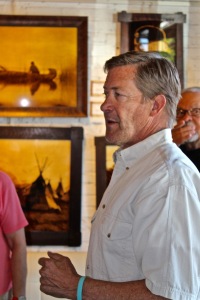
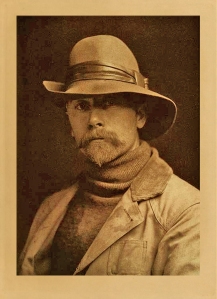

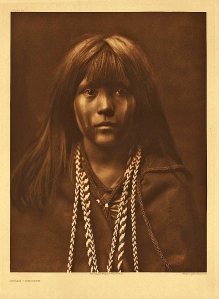
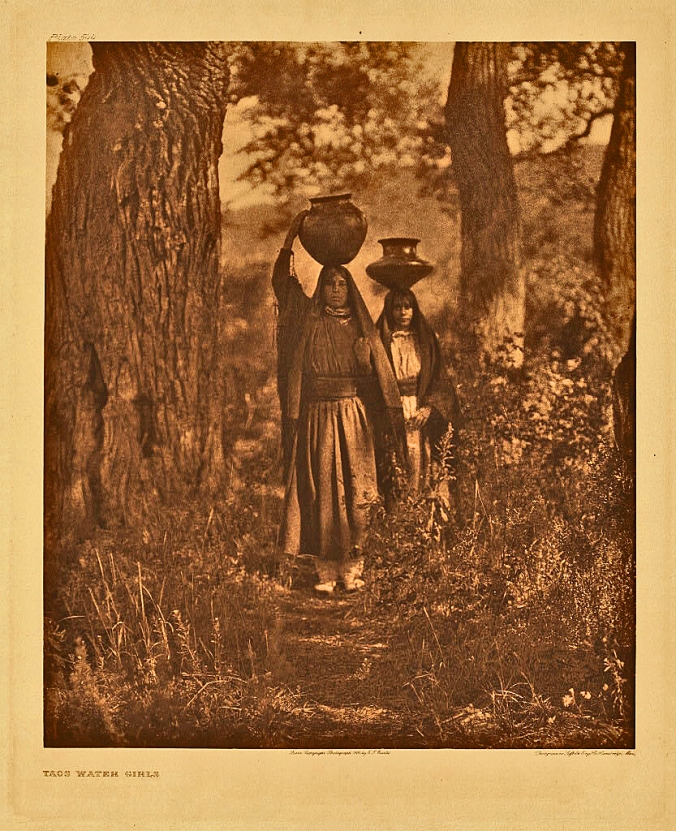
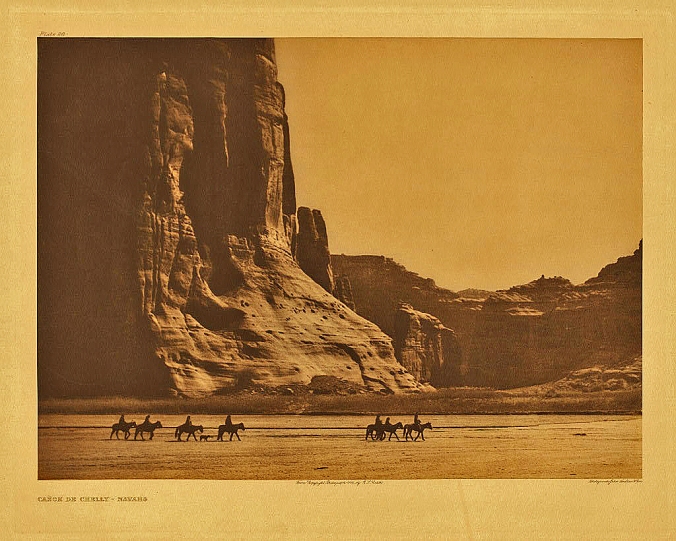
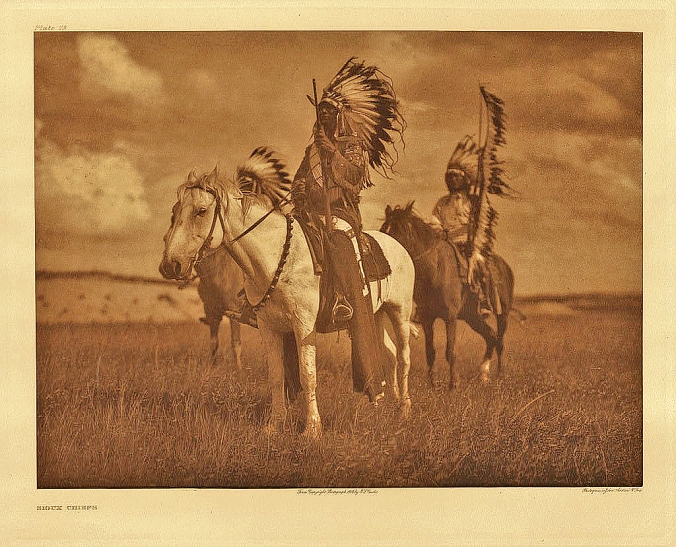
Reblogged this on Kenneth Harper Finton.
LikeLike
Pingback: CHIEF JOSEPH OF THE NEZ PERCE | Shareable Snippets